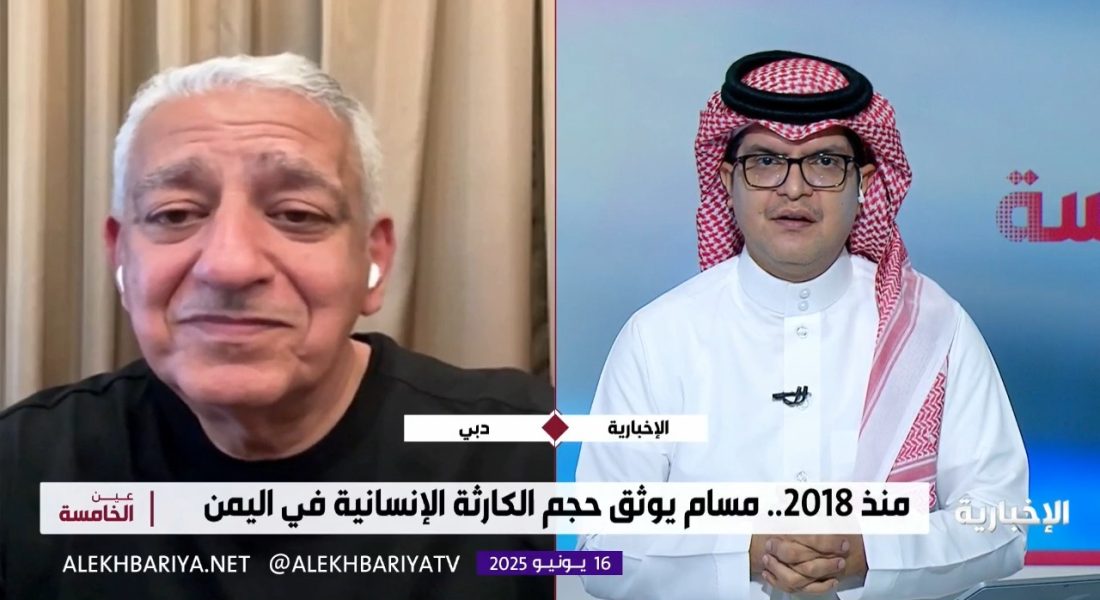Ousama Algosaibi, Managing Director of the Masam Landmine Clearance Project in Yemen, has announced that the successful removal of 500,000 landmines, unexploded ordnance (UXO), and other explosive devices represents a major achievement—not only for Saudi Arabia, but also on a global humanitarian scale.
“This milestone was not easily achieved,” Algosaibi stated during an appearance on the Ain Al-Khamisa programme on Saudi Arabia’s Al-Ekhbariya channel. “It came at great cost. We lost members of our own team. The work was extremely difficult, especially during the COVID-19 pandemic, but with God’s grace, we overcame those challenges.”
Algosaibi explained that the clearance efforts have led to a noticeable drop in mine-related casualties in the areas where Project Masam operates. He noted that many displaced families and farmers have been able to safely return to their villages and resume cultivating their land – a clear evidence of the project’s humanitarian impact, he claimed.
“We work only in areas far from active front lines,” he said. “And while removing half a million devices is significant, it’s still small compared to the vast contamination that remains in conflict zones.”
Since its launch in mid-2018, Masam has removed between 30,000 and 40,000 landmines annually, in addition to over 330,000 unexploded ordnance (UXO) items. These explosives were found in liberated civilian areas, including homes, farms, schools, and roads, far from direct combat zones.
“This is a major accomplishment,” Algosaibi said. “One of the keys to our success has been the strong cooperation from local communities. Masam has become a symbol of hope, allowing many to safely return to their homes, farms, and hospitals.”
He highlighted several regions with severe contamination, particularly Taiz, where around 50,000 mines have been cleared. Other heavily affected areas include Hudaydah, Al-Jawf, and Shabwah.
“In Shabwah, we cleared tens of thousands of mines across two phases. After nearly declaring Bayhan and Usaylan mine-free in 2018, Houthi forces re-entered and re-mined the areas. When we returned, the number of devices we removed in just three months exceeded what we had cleared there in the previous three years,” he said.
Algosaibi also addressed the evolving and dangerous tactics used by Houthi forces, noting their extensive use of homemade mines and improvised explosive devices (IEDs). “Between 80% to 85% of the mines we remove are improvised. Some are disguised in everyday objects or connected to pressure plates and electric triggers. Many are specifically designed to target demining personnel.”
He stressed the importance of strict safety protocols followed by Project Masam demining teams, ensuring both the effectiveness of operations and the protection of staff.
One of the most critical challenges, Algosaibi emphasised, is the absence of minefield maps. “Despite signing the Stockholm Agreement, the Houthis have not provided any maps or coordinates of the minefields they planted, making our work even more dangerous.”
He concluded by underscoring the inherent risks of mine clearance: “Anyone in this field knows that each day could be their last, or the day they come home with a life-altering injury. That’s the nature of this work.”
Project Masam relies heavily on its survey teams and the cooperation of local communities to locate and clear mines. “We conduct extensive searches and have rapid-response teams ready to intervene in emergencies. Every operation is carefully planned to prioritise the safety of our personnel,” Algosaibi said.
Since mid-2018, the project’s deminers have cleared 67,585,167 square metres of land, making these areas safe once again for civilian use.

